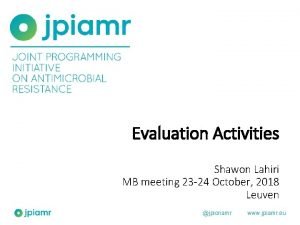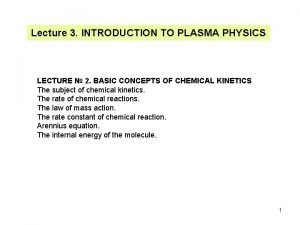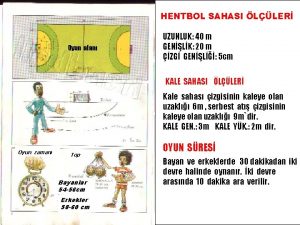What is next Susanta Lahiri Saha Institute of








![Existing reports… Cross section [mb] 12 C+141 Pr; Alexander and Simonoff (1963) 149 Tb Existing reports… Cross section [mb] 12 C+141 Pr; Alexander and Simonoff (1963) 149 Tb](https://slidetodoc.com/presentation_image/8f2f696c5da427a5033dba9e94ce01d0/image-9.jpg)
![PACE-II cross section [mb] Theory… 12 C + nat. Pr 500 450 400 350 PACE-II cross section [mb] Theory… 12 C + nat. Pr 500 450 400 350](https://slidetodoc.com/presentation_image/8f2f696c5da427a5033dba9e94ce01d0/image-10.jpg)

![Our measurement… 12 C+141 Pr Cross section [mb] 70 149 -Tb 60 150 -Tb Our measurement… 12 C+141 Pr Cross section [mb] 70 149 -Tb 60 150 -Tb](https://slidetodoc.com/presentation_image/8f2f696c5da427a5033dba9e94ce01d0/image-12.jpg)
![Comparison… 149 Tb 40 Tb-149 (Alexander & Simonoff) Cross section [mb] 35 30 25 Comparison… 149 Tb 40 Tb-149 (Alexander & Simonoff) Cross section [mb] 35 30 25](https://slidetodoc.com/presentation_image/8f2f696c5da427a5033dba9e94ce01d0/image-13.jpg)



- Slides: 16

What is next? Susanta Lahiri Saha Institute of Nuclear Physics Kolkata, India

In 2010, the Canadian Organization of Medical Physicists (COMP) met for its 56 th annual scientific meeting in the nation's capital, Ottawa to discuss the latest issues of Nuclear medicine. A dedicated session of the symposium addressed "Medical Isotopes and Imaging: Where do we go from here? ". The session addressed today's problems with the supply of the imaging isotope 99 m. Tc – an issue that's felt keenly here in Ottawa, with the currentlyclosed Chalk River nuclear reactor only a two-hour drive away.

Our proposal given on 2009 December ISOLDE meeting therefore is still relevant Towards building a Radionuclide Bank from proton irradiated Hg and Pb-Bi targets The 1 -2 Ge. V proton induced spallation reaction on the liquid mercury or Pb-Bi eutectic converter target will produce large variety of radionuclides along with strong flux of fast neutrons. We would like to develop methods for separate confinement of each radionuclides with high radiochemical and radioisotopical purity.

Why large facilities became so important Reduced reactor facilities/shutdown of reactors Limitations of low energy medical accelerators Example from 149 Tb is among the few promising -emitters, which are presently projected for human clinical use. 149 Tb Half life : 4. 118 h Decay modes: EC (82. 3%) and (17. 7 %) -particle energy: 3. 97 Me. V

Production routes Light charged particle (p, , 3 He) induced reactions 152 Gd(p, 4 n)149 Tb 152 Gd( , 7 n)149 Dy(EC)149 Tb, proton induced spallation on 152 Gd(3 He, 6 n) 149 Dy(EC)149 Tb targets, like Ta, W etc. heavy ion induced reactions 141 Pr(12 C, 4 n)149 Tb 141 Pr(14 N, p 5 n)149 Tb 144 Sm(9 Be, 4 n)149 Dy (EC) 149 Tb 142/143 Nd(12 C, 5/6 n)149 Dy(EC)149 Tb

Our aim Identification of radionuclides Quantification of each radionuclide Development of chemical separation techniques Identified probable radionuclides by our

Results we found Radioisotope present As-72 (26. 0 h ) Co-56 (77. 27 d) Co-58 (70. 86 d) Co-60 (1925. 28 d) Cr-51 (27. 7025 d) Eu-145 (5. 93 d) Eu-146 (4. 61 d) Eu-147 (24. 1 d) Eu-150 m (12. 8 h) Fe-59 (44. 495 d) Gd-146 (48. 27 d) Gd-153 (240. 4 d) Hf-175 (70 d) Hg-203 (46. 595 d) Ir-188 (41. 5 h) Lu-172 (6. 7 d) Mo-99 (2. 7489 d) Os-185 (93. 6 d) Rb-83 (86. 2 d) Re-188 (17. 003 h) Sc-46 (83. 79 d) Ta-183 (5. 1 d) Tc-99 m (6. 0058 h) V-48 (15. 9735 d) Y-88 (106. 616 d) Yb-169 (32. 018 d) Zr-95 (64. 032 d) Radioisotopes to be confirmed As-74 (17. 77 d) Au-194 (38. 02 h) Au-199 (3. 139 d) Ba-128 (2. 43 d) Ba-135 m (28. 7 h) Be-7 (53. 22 d) Ca-47 (4. 536 d) Co-57 (271. 74 d) Cs-129 (32. 06 h) Er-172 (49. 3 h) Eu-148 (54. 5 d) Eu-149 (93. 1 d) Hf-172 (1. 87 y) Hg-195 m (41. 6 h) I-123 (13. 232 h) I-133 (20. 8 h) In-111 (2. 8047 d) Ir-192 (73. 827 d) Ir-194 (19. 28 h) Lu-173 (1. 37 y) Mg-28 (20. 915 h) Mn-54 (312. 12 d) Na-22 (2. 6027 y) Nb-92 m (10. 15 d) Nb-95 (34. 991 d) Ni-57 (35. 6 h) Pd-100 (3. 63 d) Pr-142 (19. 12 h) Pt-188 (10. 2 d) Pt-195 m (4. 01 d) Rb-84 (33. 1 d) Rb-86 (18. 642 d) Re-183 (70. 0 d) Re-186 (3. 7186 d) Re-189 (24. 3 h) Rh-101 (3. 3 y) Rh-101 m (4. 34 d) Rh-105 (35. 36 h) Ru-103 (39. 26 d) Ru-97 (2. 791 d) Sc-44 m (58. 61 h) Sc-47 (3. 3492 d) Sc-48 (43. 67 h) Se-75 (119. 779 d) Sm-153 (46. 284 h) Sn-113 (115. 09 d) Tb-153 (2. 34 d) Tb-155 (5. 32 d) Tc-95 (20. 0 h) Te-121 m (154 d) Tm-167 (9. 25 d) Y-87 m (13. 37 h) Zn-69 m (13. 76 h) Zr-86 (16. 5 h) Pm-143 (265 d) Zr-97 (16. 744 h)

Work plan 1 C 1 Irradiation and Production of radionuclides C 2/S 1 Identification of -emitting radionuclides S 2 Chemical separation S 3 Development of sequential separation technique of clinical radionuclides (T 1/2 > 7 d) C 3/S 4 Identification of -emitting radionuclides 2 3 C 4/E 1 Development of chemical separation technique for short lived ( 1 d) radionuclides S 5 Separation and detection of long-lived (T 1/2 ~100 yrfew Myr) radionuclides Constrains ? Safety clearance…. Transport Finance
![Existing reports Cross section mb 12 C141 Pr Alexander and Simonoff 1963 149 Tb Existing reports… Cross section [mb] 12 C+141 Pr; Alexander and Simonoff (1963) 149 Tb](https://slidetodoc.com/presentation_image/8f2f696c5da427a5033dba9e94ce01d0/image-9.jpg)
Existing reports… Cross section [mb] 12 C+141 Pr; Alexander and Simonoff (1963) 149 Tb 600 500 12 C+141 Pr; Kossakowski et al (1985) 400 14 N+141 Pr; Kossakowski et al(1985) 300 200 100 0 45 55 65 75 85 95 Incident energy [Me. V] 12 C+141 Pr (1963) 105 115
![PACEII cross section mb Theory 12 C nat Pr 500 450 400 350 PACE-II cross section [mb] Theory… 12 C + nat. Pr 500 450 400 350](https://slidetodoc.com/presentation_image/8f2f696c5da427a5033dba9e94ce01d0/image-10.jpg)
PACE-II cross section [mb] Theory… 12 C + nat. Pr 500 450 400 350 300 250 200 150 100 50 0 Tb-150 Tb-149 Eu-146 Eu-145 50 55 60 65 70 75 80 85 Energy[Me. V] In order to understand discrepancies in the production of 149 Tb from the natural praseodymium target we made an attempt to measure production cross sections in the same reaction.

Experiment Pr 6 O 11 Targets 12 C beam 2. 5 -3 mg/cm 2 The experiment was carried out at the BARCTIFR pelletron facility
![Our measurement 12 C141 Pr Cross section mb 70 149 Tb 60 150 Tb Our measurement… 12 C+141 Pr Cross section [mb] 70 149 -Tb 60 150 -Tb](https://slidetodoc.com/presentation_image/8f2f696c5da427a5033dba9e94ce01d0/image-12.jpg)
Our measurement… 12 C+141 Pr Cross section [mb] 70 149 -Tb 60 150 -Tb 50 151 -Tb 40 30 20 10 0 40 45 50 55 60 65 Energy [Me. V] 70 75 80
![Comparison 149 Tb 40 Tb149 Alexander Simonoff Cross section mb 35 30 25 Comparison… 149 Tb 40 Tb-149 (Alexander & Simonoff) Cross section [mb] 35 30 25](https://slidetodoc.com/presentation_image/8f2f696c5da427a5033dba9e94ce01d0/image-13.jpg)
Comparison… 149 Tb 40 Tb-149 (Alexander & Simonoff) Cross section [mb] 35 30 25 20 15 10 5 0 50 55 60 65 70 Energy [Me. V] 75 80

Production of 149 Tb was not satisfactory Possible reasons 149 m. Tb shows high shielding towards the production of 149 Tb The high initial angular momentum of the compound nucleus formed in 12 C+141 Pr reaction likely populates the high spin (11/2 -) isomer (149 m. Tb) which directly decays to 149 Gd. 149 Tb (spin 1/2+) is produced only from the decay of low spin states of the compound nucleus.

Why low cross section? 7/2� 99. 978% � 11/2 - 35. 8 1/2+ 0 149 Tb 83. 3% � 7/2� 149 Gd (9. 28 d) 149 Dy 0 (4. 23 min) 149 m. Tb (4. 16 min) 0. 022% (4. 1 h) 16. 7%

Outlook… It becomes important to study indirect production route, which may offer better cross section for 149 Tb For example 141 Pr(14 N, 6 n) 149 Dy (EC) 149 Tb 144 Sm(9 Be, 4 n)149 Dy (EC) 149 Tb 142/143 Nd(12 C, 5/6 n)149 Dy(EC)149 Tb
 Susanta lahiri
Susanta lahiri Susanta lahiri
Susanta lahiri X.next = x.next.next
X.next = x.next.next How to write a paragraph esl
How to write a paragraph esl Anitra lahiri
Anitra lahiri Shibamouli lahiri
Shibamouli lahiri Lexilogos ancient greek
Lexilogos ancient greek Shyamacharan lahiri
Shyamacharan lahiri Arjun lahiri
Arjun lahiri Arjun lahiri
Arjun lahiri Sym.diff
Sym.diff Debye shielding
Debye shielding Voleybol ve basketbol oyun kuralları
Voleybol ve basketbol oyun kuralları Beyzbol sahası ölçüleri
Beyzbol sahası ölçüleri Kumar
Kumar Eskrim pisti ölçüleri
Eskrim pisti ölçüleri Hentbol saha ölçüleri
Hentbol saha ölçüleri































